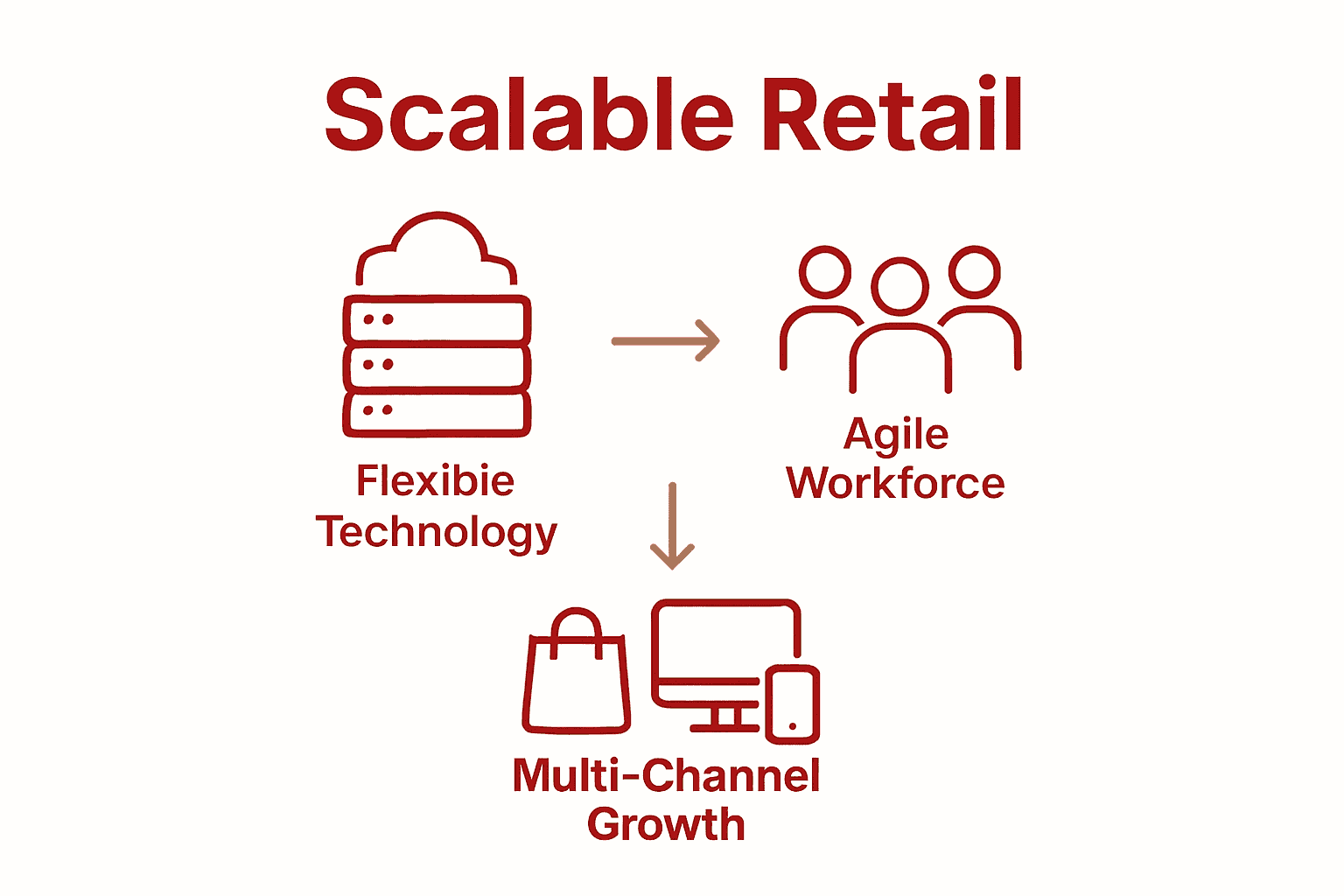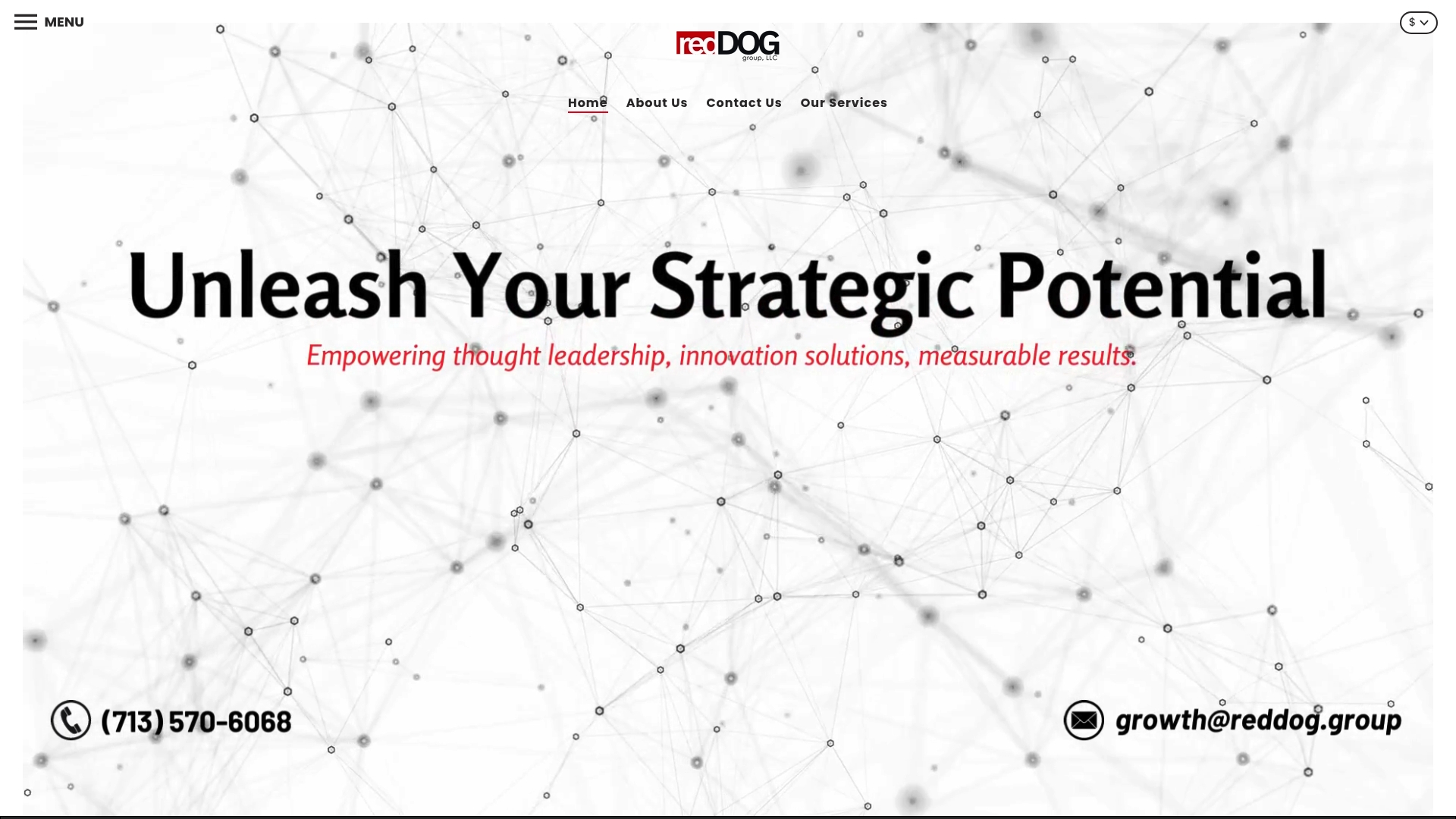
What Is Business Scalability? Complete Overview
Posted on
Over 65 percent of retail businesses struggle to keep up with growth once demand rises faster than their systems can handle. In today’s fast-changing marketplace, expanding a retail operation is not just about selling more products but about building the capacity to do so without ballooning costs. Understanding business scalability helps retailers unlock growth, maintain efficiency, and stay resilient in the face of shifting consumer trends and fierce competition.
Table of Contents
- Defining Business Scalability in Retail
- Key Types of Business Scalability Models
- Core Characteristics and Growth Enablers
- Critical Challenges and Common Pitfalls
- Best Practices for Achieving Scalability
Key Takeaways
| Point | Details |
|---|---|
| Understanding Scalability | Business scalability in retail enables revenue growth without a proportionate increase in costs or resources, emphasizing the importance of smart growth strategies. |
| Key Scalability Models | Retailers can utilize various scalability models, including distribution channel expansion and platform models, to enhance their operational capacity and market presence. |
| Core Characteristics | Successful scalability is driven by a combination of flexible technology, talent development, and strategic partnerships, allowing businesses to adapt to evolving demands. |
| Common Challenges | Retailers must address operational inefficiencies and avoid pitfalls like inadequate infrastructure and misallocation of resources to ensure sustainable growth. |
Defining Business Scalability in Retail
Business scalability in retail represents a company’s capacity to grow revenue without proportionally increasing operational costs or resources. According to the Retail Council, scalability is critical for modern retailers seeking to expand their market presence and remain competitive in an evolving digital landscape.
At its core, business scalability means creating systems, processes, and strategies that enable smooth expansion without compromising efficiency or performance. For retailers, this translates into developing flexible infrastructure that can handle increased product volumes, customer interactions, and sales channels without requiring a linear increase in expenses or workforce. As Knowledge Wharton emphasizes, successful scalability hinges on strategic resource utilization and intelligent investment.
Key characteristics of a scalable retail business include:
- Adaptable technological infrastructure
- Efficient inventory management systems
- Streamlined operational processes
- Flexible workforce strategies
- Digital platform capabilities that support multichannel selling
Scalability isn’t just about growing larger; it’s about growing smarter.
 Retailers must design their business models to absorb growth without experiencing proportional increases in complexity or cost. 7 Retail Strategy Best Practices for Growth and Success can provide additional insights into developing a robust, expandable business framework that supports sustainable growth.
Retailers must design their business models to absorb growth without experiencing proportional increases in complexity or cost. 7 Retail Strategy Best Practices for Growth and Success can provide additional insights into developing a robust, expandable business framework that supports sustainable growth.
Key Types of Business Scalability Models
Retail businesses can leverage multiple scalability models to support sustainable growth and operational flexibility. According to MIT Sloan Review, there are five primary patterns for achieving effective scalability that retailers can strategically implement.
Platform Scalability represents one of the most powerful models for modern businesses. As research from EDUCAUSE Review suggests, this approach leverages interdependencies between customer groups and enables co-creation strategies that expand business capabilities without proportional cost increases.
The five key scalability models include:
Here’s a summary of the five key scalability models in retail:
| Scalability Model | Description | Primary Benefit |
|---|---|---|
| Distribution Channel Expansion | New sales channels and market entry points | Increased reach |
| Capacity Optimization | Systems for managing increased demand efficiently | Lower operational costs |
| Strategic Outsourcing | External partners for non-core investments | Flexible resources |
| Customer/Partner Engagement | Multiple interaction/value touchpoints | Enhanced customer loyalty |
| Platform Model | Ecosystems for network effects and collaboration | Rapid, scalable growth |
- Distribution Channel Expansion: Adding new sales channels and market entry points
- Capacity Optimization: Developing systems that manage increased demand efficiently
- Strategic Outsourcing: Transferring non-core capital investments to external partners
- Customer/Partner Engagement: Creating multiple interaction and value generation touchpoints
- Platform Model: Building ecosystems that enable network effects and collaborative value creation
7 Effective Ecommerce Growth Strategies for Retailers can provide additional context for retailers looking to implement these scalability frameworks effectively. The most successful businesses understand that scalability isn’t about rigid growth, but adaptive, intelligent expansion that maintains operational efficiency and customer value.
Core Characteristics and Growth Enablers
Business scalability is a multifaceted concept that requires strategic alignment across various organizational dimensions. According to the EKG/Maturity Framework, successful scalability encompasses eight critical dimensions: financial, operational, customer, talent, market, technology, partnerships, and environmental adaptability.
The core characteristics of scalable businesses extend beyond simple growth metrics. Business Initiative highlights three fundamental scalability dimensions that drive sustainable expansion: technological scalability, geographic scalability, and people scalability. These elements work together to create a robust framework for business growth that can adapt to changing market conditions and emerging opportunities.

Key growth enablers for businesses include:
- Flexible Technology Infrastructure: Implementing adaptable digital systems
- Talent Development: Creating robust recruitment and training programs
- Agile Operational Processes: Designing workflows that can quickly adjust to market demands
- Strategic Partnerships: Building networks that extend operational capabilities
- Financial Resilience: Maintaining financial models that support rapid expansion
Effective Business Growth Strategies Guide for 2025 offers additional insights for businesses looking to develop comprehensive scalability strategies. The most successful organizations understand that scalability is not a destination, but a continuous journey of strategic adaptation and intelligent resource allocation.
Critical Challenges and Common Pitfalls
Scaling a business is not without significant challenges, and understanding these potential roadblocks is crucial for sustainable growth. According to Knowledge Wharton, uneven resource utilization and financial constraints represent major impediments that can dramatically slow or derail expansion efforts.
Operational inefficiencies emerge as one of the most critical challenges businesses face during scaling. The Retail Council of Canada highlights that retailers frequently encounter significant obstacles like stock-out issues and failure to implement comprehensive omnichannel strategies, which can result in substantial customer attrition and lost revenue opportunities.
Common scalability pitfalls include:
- Inadequate Infrastructure: Technological systems unable to support rapid growth
- Resource Misallocation: Inefficient distribution of human and financial capital
- Lack of Strategic Planning: Expanding without clear, measurable objectives
- Inflexible Business Models: Rigid processes that cannot adapt to market changes
- Insufficient Talent Management: Failing to recruit and retain skilled professionals
What is Growth Consulting? provides additional context for businesses seeking to navigate these complex challenges. Successful scalability requires continuous assessment, strategic flexibility, and a proactive approach to identifying and mitigating potential growth barriers.
Best Practices for Achieving Scalability
Achieving sustainable business scalability requires a strategic and holistic approach that goes beyond simple growth tactics. According to MIT Sloan Management Review, successful organizations develop scalability through deliberate strategies like adding new distribution channels, strategically outsourcing capital investments, and establishing innovative platform models.
Data-driven decision making emerges as a critical best practice for scalable businesses. Harvard Business School Online emphasizes the importance of leveraging network effects and advanced data analytics to create efficient growth mechanisms that can rapidly adapt to changing market conditions. This approach allows businesses to optimize resources, predict market trends, and make informed strategic investments.
Key best practices for achieving scalability include:
- Modular Technology Infrastructure: Designing flexible digital systems that can easily expand
- Strategic Outsourcing: Delegating non-core functions to specialized partners
- Data Analytics Integration: Implementing robust analytics to guide growth decisions
- Continuous Learning Programs: Developing talent that can adapt to evolving business needs
- Agile Organizational Design: Creating structures that support rapid innovation and adaptation
Understanding the Role of Branding in Growth offers additional perspectives on building scalable business strategies. The most successful organizations view scalability not as a destination, but as an ongoing process of strategic refinement and continuous improvement.
Unlock Scalable Growth with Expert Retail Consulting
Scaling your retail business while managing operational costs is a challenge many face. Whether it is inefficient infrastructure, resource misallocation, or inflexible processes slowing your growth, you are not alone. This article highlights how adaptability, omnichannel mastery, and smart platform models drive sustainable expansion. At Reddog Group, we specialize in these exact challenges by building flexible, data-driven systems that help retailers expand revenue without proportional cost increases.

Ready to overcome scalability pitfalls and boost your brand’s growth across multiple channels? Discover how our proven expertise in marketplace management, Amazon FBA, and integrated digital marketing strategies empower small and medium-sized businesses. Visit Reddog Group now to explore tailored solutions designed to expand your market reach and increase sales effectively. Don’t wait for challenges to slow your momentum. Start scaling smarter today with omnichannel retailing strategies that deliver measurable results and sustainable growth.
Frequently Asked Questions
What is business scalability in retail?
Business scalability in retail refers to a company’s ability to increase revenue while keeping operational costs and resources proportionate. It focuses on creating systems and processes that support growth without sacrificing efficiency.
What are the key characteristics of a scalable retail business?
Key characteristics of a scalable retail business include adaptable technological infrastructure, efficient inventory management, streamlined operational processes, flexible workforce strategies, and capabilities for multichannel selling.
What are the main types of scalability models for retailers?
The main types of scalability models for retailers include distribution channel expansion, capacity optimization, strategic outsourcing, customer/partner engagement, and platform model. Each model helps in supporting sustainable growth and operational flexibility.
What are common challenges faced when scaling a retail business?
Common challenges include inadequate infrastructure, resource misallocation, lack of strategic planning, inflexible business models, and insufficient talent management. Recognizing these issues early can help in mitigating potential roadblocks to growth.
Recommended
- What is Business Transformation? Understanding its Impact
- Effective Business Growth Strategies Guide for 2025
- Optimize Small Business Growth Strategy Workflow Quickly
- Complete Guide to Why Expand to Amazon
- Understanding Scalable Software Solutions for Businesses
- AI Invoice Parse – Understanding the Essentials of Growing Your Business Online
Leave a comment: